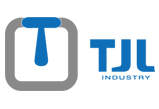- Home
- >
- >
- Hardening Technology of Ball and Seat Surface
Hardening Technology of Ball and Seat Surface
1. Technologies that have been applied:
A, the surface of the hard chrome plating; B, surface hardening heat treatment, nitriding treatment; C, Stellite cemented carbide welding.
At present, the above-mentioned surface hardening techniques have been rarely used.
2. Now commonly used techniques:
A, HVOF technology (HVOF); B, a nickel-based alloy thermal spray technology; C, laser cladding technology.
A, HVOF technology (HVOF)
HVOF (HVOF) mainly through a high speed abrasion resistant powder coating material is sprayed onto the substrate surface, spraying air flow rate largely determines the quality of the spraying, the spray gun can generate higher airflow speed, the wear-resistant powder coating can be obtained a higher velocity, and thus wear-resistant powder coating and the substrate material can be obtained higher binding strength and higher density, therefore has better wear performance and corrosion resistance.
Advantages supersonic spray that can be sprayed super-hard coating materials, coating hardness can even reach HRC74 or more, so the coating has good resistance to abrasion and wear resistance properties. Further, when the supersonic spray the matrix material need not be heated to high temperatures, so the substrate material is not thermally deformed. Because physical HVOF mainly through the high-speed impact wear resistant powder coating and the substrate material, to produce a combination of bonding strength than the thermal sprayed nickel-based alloys are lower, usually combined force of about 68 ~ 76MPa, therefore, for high pressure ball (such as CLASS1500 ~ CLASS2500 the ball) ball, supersonic spray coating has come off its technology may be in use.
For HVOF (HVOF), coating performance indicators are mainly the following aspects: porosity, oxide content, hardness, bonding strength, metallurgical structure, the coating stress condition, coating processing performance, coating uniformity
Common HVOF materials: tungsten carbide cobalt, tungsten carbide cobalt chromium, nickel-based alloys, chromium carbide, ceramics and so on. Cobalt and tungsten carbide cobalt chromium temperature generally does not exceed 540 ℃, to apply to a higher temperature, typically sprayed chromium carbide and ceramic materials may be used.
A typical HVOF system: supersonic spray sphere, taking into account the binding force supersonic spray coating thickness and cost control in the sprayed layer is usually about 0.3mm, in order to ensure the uniformity of the coating circle, sphere before spraying and the degree of uniformity of spraying is very important, generally require grinding in order to ensure the roundness of the ball before spraying, the use of computer-controlled robot to gun control to ensure the uniformity of the coating, but the method of doing it is difficult to ensure that the gun control uniformity of the coating.
B.Thermal Spraying Technology of Nickel Base Alloy
Nickel-base alloy thermal spraying is currently used in metal seal ball valve sealing surface hardening method, nickel-based alloy wear resistance, corrosion resistance, temperature, etc., its comprehensive performance is excellent, according to our practice, nickel-based alloy In the gray water, black water, coal slurry, cinder and other conditions medium.
Nickel-based alloy is an self melted alloy, the main components include nickel, chromium, boron, silicon, which is the main component of nickel, wear-resistant materials and matrix binder, according to the composition of the different components, you can get different Hardness, metal hard-sealed ball valve HRC55 ~ 64 generally use the hardness. Through the high temperature heating of the base material and the nickel base alloy material, the matrix and the sealing surface wear-resisting material can be metal bonded, therefore, the thermal spraying of the nickel base alloy has the characteristics of high bonding strength. Compared with supersonic flame spraying, nickel-based alloy thermal spraying is another advantage of the coating thickness is larger, usually 0.5 ~ 1.0mm.
For Ni-based alloy thermal spraying, spraying process for the substrate and the nickel-based alloy material binding force has a great impact on the ball and nickel-based alloy material heating temperature control is very important, the temperature is too low, the base material and nickel-based alloy material Can not really achieve metallurgical bonding, easily lead to the loss of coating materials. While the temperature is too high, will lead to nickel-based alloy melt loss. For the large diameter sphere, due to the various parts of the wall thickness of the ball is not uniform, therefore, to accurately and evenly control the ball heating temperature is very difficult, which is the main difficulty of nickel-based alloy thermal spraying, to this end, we adopted the mid- Ball heating technology, and achieved very good results.
C.Laser cladding
The use of laser cladding technology on the surface of the ball alloy spray also has a very good effect, the use of the technology, the sphere of the heat affected zone is very small, spray coating hardness than nickel-based thermal spraying is higher, but spray welding efficiency , And spray after welding the ball surface finish is low, the processing volume is bigger.
The hardening technology of wear-resistant layer on ball and seat surface should be selecte d and applied rationally according to working condition, medium hardness and manufacturing process.




;)
;)




